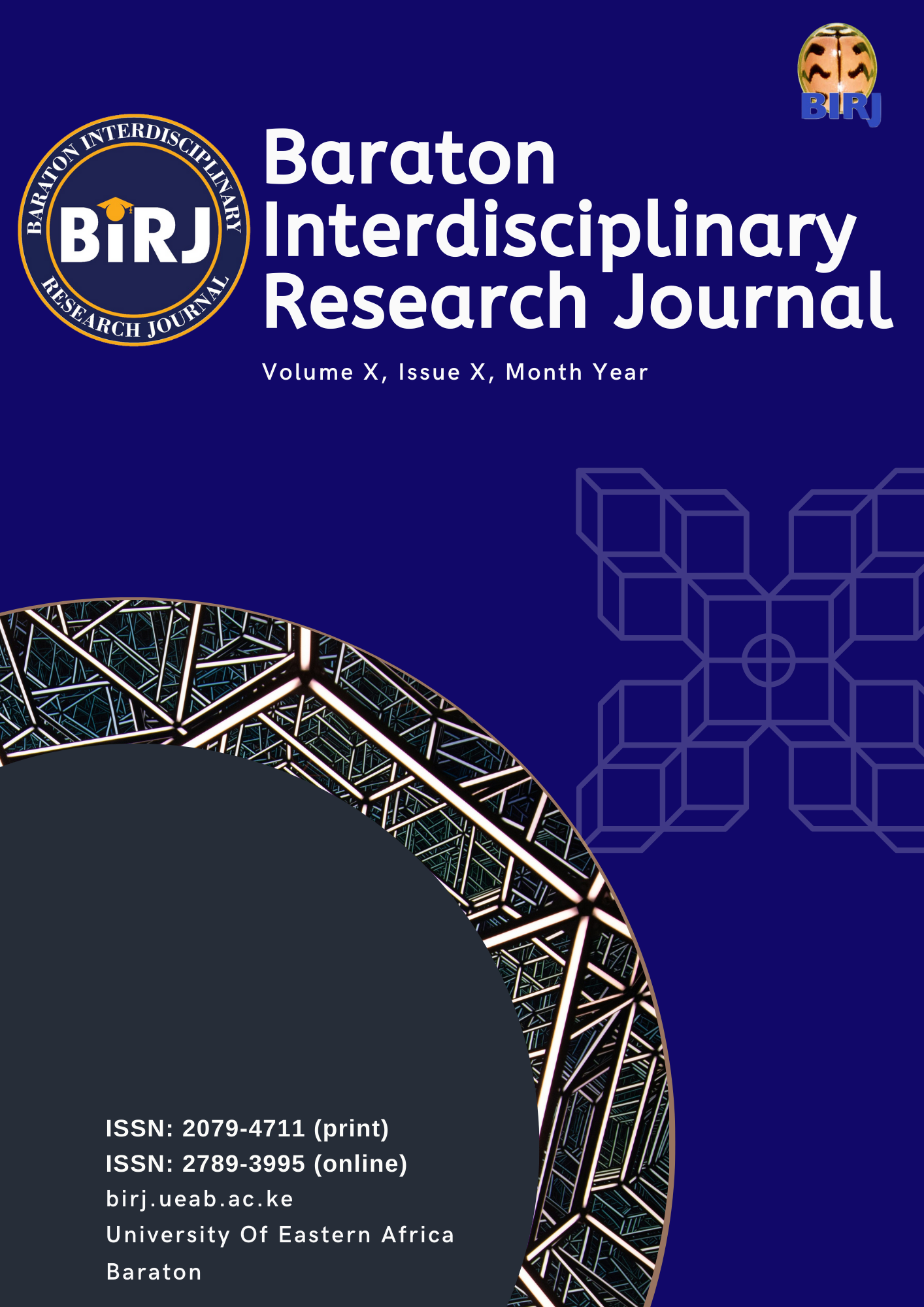COMPARISON OF STAFF AND FACULTY PERCEPTIONS OF ORGANIZATIONAL COMMITMENT IN A SELECTED PRIVATE INSTITUTION OF HIGHER LEARNING IN KENYA
Keywords:
Affective commitment, continuance commitment, normative commitment IntroductionAbstract
Many employees in a selected private institution of higher learning feel that working for this institution is not
rewarding. As a result the attrition rate of specifically faculty is high. Thus, this study has assessed the
perceptions of organizational commitment of staff and faculty in a selected private institution of higher
learning. Data was gathered from respondents consisting of 34 staff and 68 faculty members. They responded
to 18-item, three-subscale organizational commitment questionnaire developed by Allen, Meyer, and Smith
(1993). The gathered data was analyzed using SPSS software version 20. Results were interpreted and
reported based on the analysis. Findings revealed that on a scale of 1 to 5, the staff and faculty affective
organizational commitment was rated higher (M = 3.91, SD=0.67), followed by normative organizational
commitment (M= 3.59, SD = 0.85). The continuance professional commitment was rated the lowest (M =
3.04, SD = 0.62). These results reveal that most of the staff and faculty are committed to the organization not
because of the material/financial benefit that they are making, but because of their positive feelings and
attitudes towards the organization. The t-test results show that there is no significant difference in the
perception of faculty and staff in terms of affective, normative, and continuance organizational commitment.
ANOVA results also revealed that there is no significant difference in affective, normative, and continuance
organizational commitment of employees when respondents are grouped according to years of service.
Downloads
Published
License
License Terms
All articles published in the Baraton Interdisciplinary Research Journal (BIRJ) are licensed under a Creative Commons Attribution-NonCommercial-ShareAlike 4.0 International License (CC BY-NC-SA 4.0).
This license permits users to share (copy and redistribute) and adapt (remix, transform, build upon) the material for non-commercial purposes, provided that proper attribution is given to the original authors, a link to the license is included, and any derivative works are distributed under the same license.
Full license details: https://creativecommons.org/licenses/by-nc-sa/4.0/
Most read articles by the same author(s)
- Korso Gude Butucha, Yona Balyage, Fanta Hotamo, BENEFITS AND CHALLENGES OF COLLABORATION IN THE INSTITUTIONS OF HIGHER LEARNING IN EAST-CENTRAL AFRICA DIVISION , Baraton Interdisciplinary Research Journal: Vol. 4 (2014): Special Issue
- Korso Gude Butucha, EMERGING TRENDS IN STUDENT ENGAGEMENT IN THE 21ST CENTURY CONTEMPORARY WORLD , Baraton Interdisciplinary Research Journal: Vol. 6 (2016): Special Issue
- Korso Gude Butucha, E-LEARNING NEEDS ASSESSMENT AT THE UNIVERSITY OF EASTERN AFRICA, BARATON , Baraton Interdisciplinary Research Journal: Vol. 6 (2016): Special Issue
- Yona Balyage, Korso Gude Butucha, Fanta Hotamo, ACCREDITATION OF INSTITUTIONS OF HIGHER LEARNING IN A GLOBAL ERA: PROSPECTS, CHALLENGES, AND IMPLICATIONS , Baraton Interdisciplinary Research Journal: Vol. 5 (2015): Special Issue

